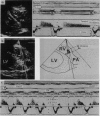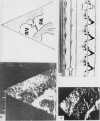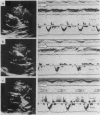Abstract
Pulsed Doppler echocardiography in healthy individuals often shows a disturbance of diastolic flow in the right ventricular outflow tract just below the pulmonary valve that suggests regurgitation. This disturbance of diastolic flow was studied in 50 healthy individuals and 40 patients with cardiopulmonary disease, some of whom had a pulmonary regurgitant murmur. Diastolic flow was disturbed in 39 of the 50 healthy individuals. In 32, cross sectional echocardiography gave a satisfactory image of the pulmonary valve. The characteristic Doppler signals usually lasted throughout diastole, were directed toward the right ventricular cavity, and gradually waned towards end diastole; they formed a spindle shaped area of abnormal signals that extended to within 10 mm of the coaptation of the pulmonary valve towards the right ventricular cavity and the pressure difference estimated from the signals by the modified Bernoulli equation seemed to be proportional to the normal retrograde transpulmonary pressure difference. In all 40 patients with cardiopulmonary disease, signals indicating pulmonary regurgitation were found whether or not a regurgitant murmur was present. When it was present, however, the spindle was longer than 20 mm and in patients with pulmonary hypertension the velocity of abnormal diastolic flow was higher than in healthy individuals. The Doppler signals registering disturbed flow in the healthy individuals resembled the signals caused by pulmonary regurgitation in the patients in terms of location, orientation, and configuration. These results show that healthy individuals usually have trivial pulmonary regurgitation. In practice the distance that the flow disturbance extends from the valve and estimated pressure difference across the valve are probably the most important variables for assessing the clinical significance of pulmonary valve regurgitation.
Full text
PDF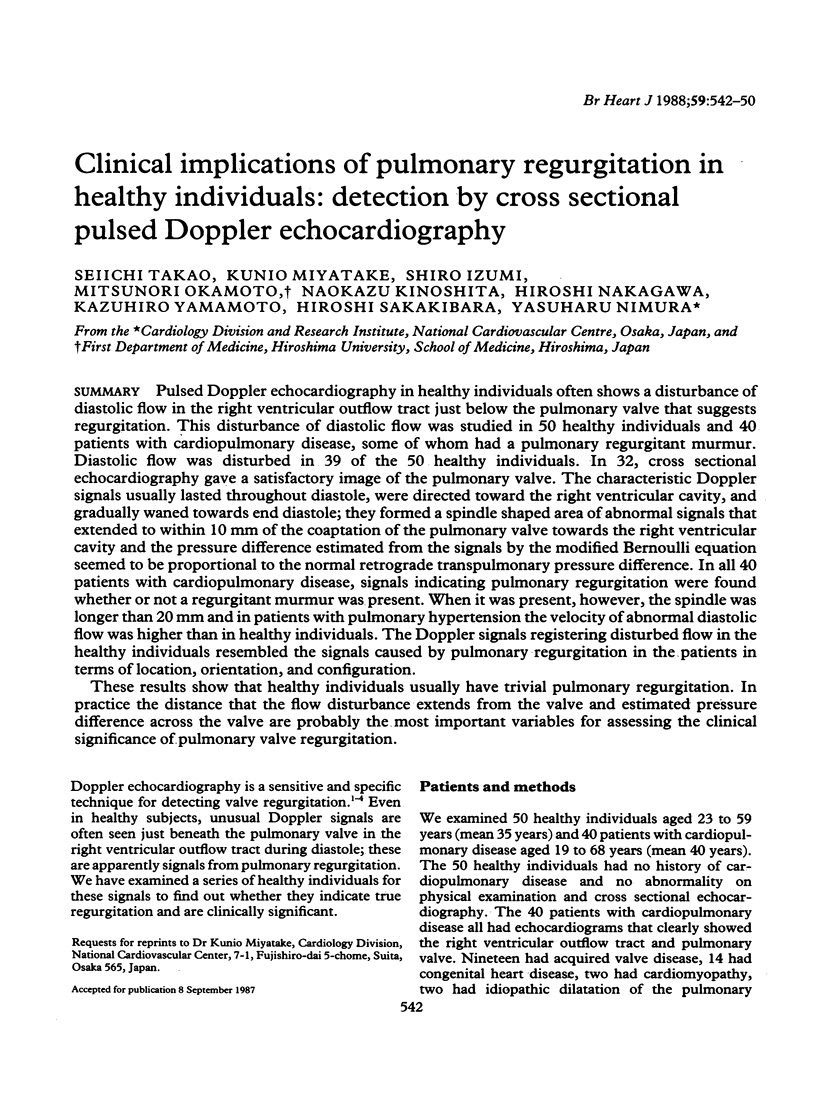
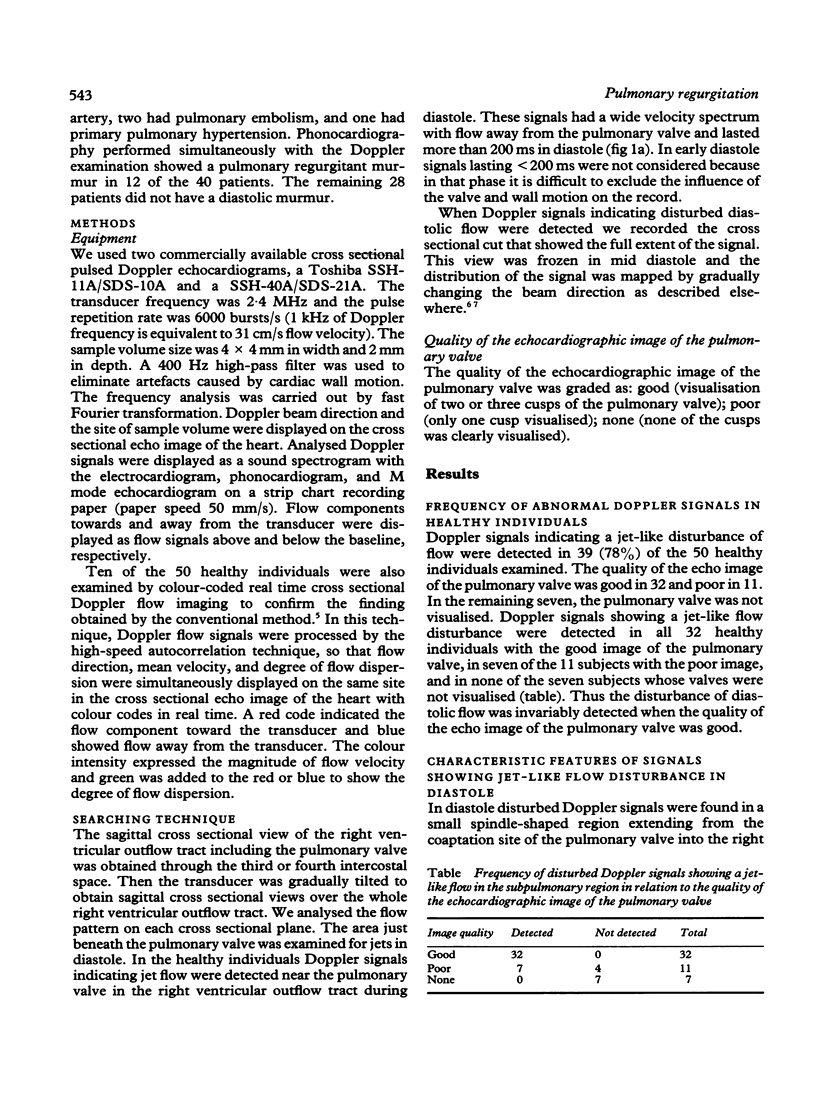
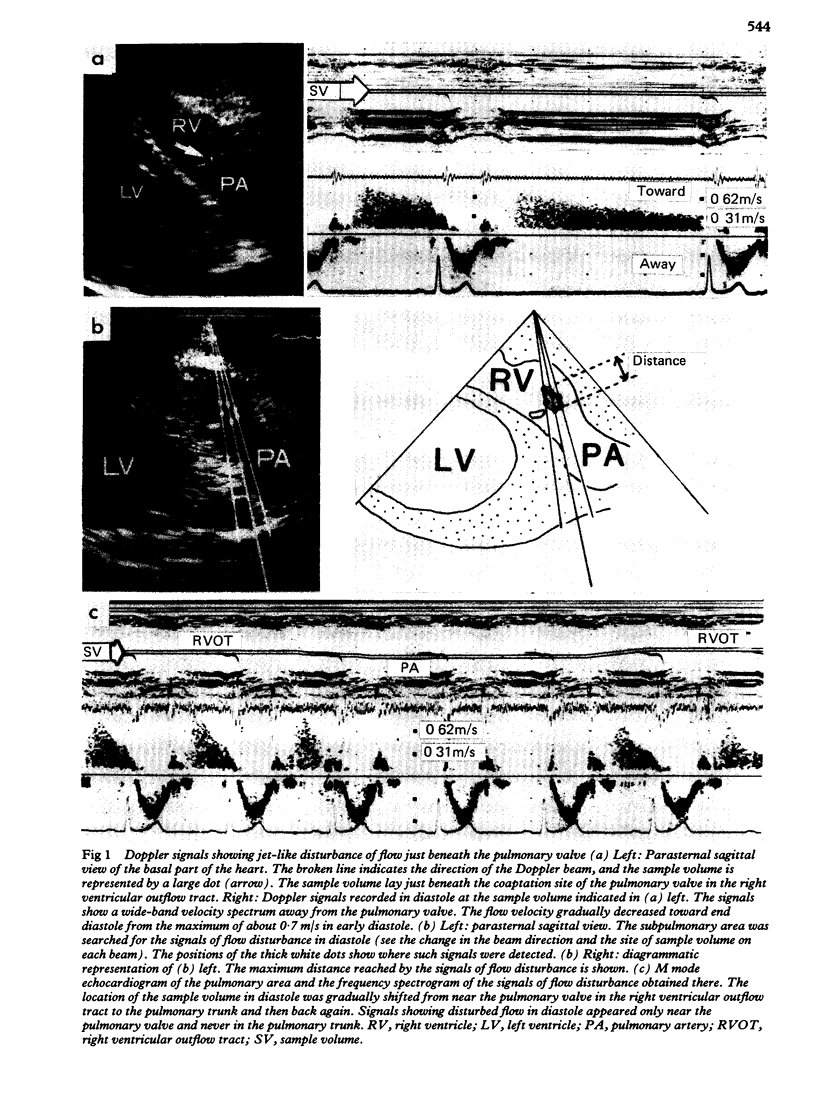
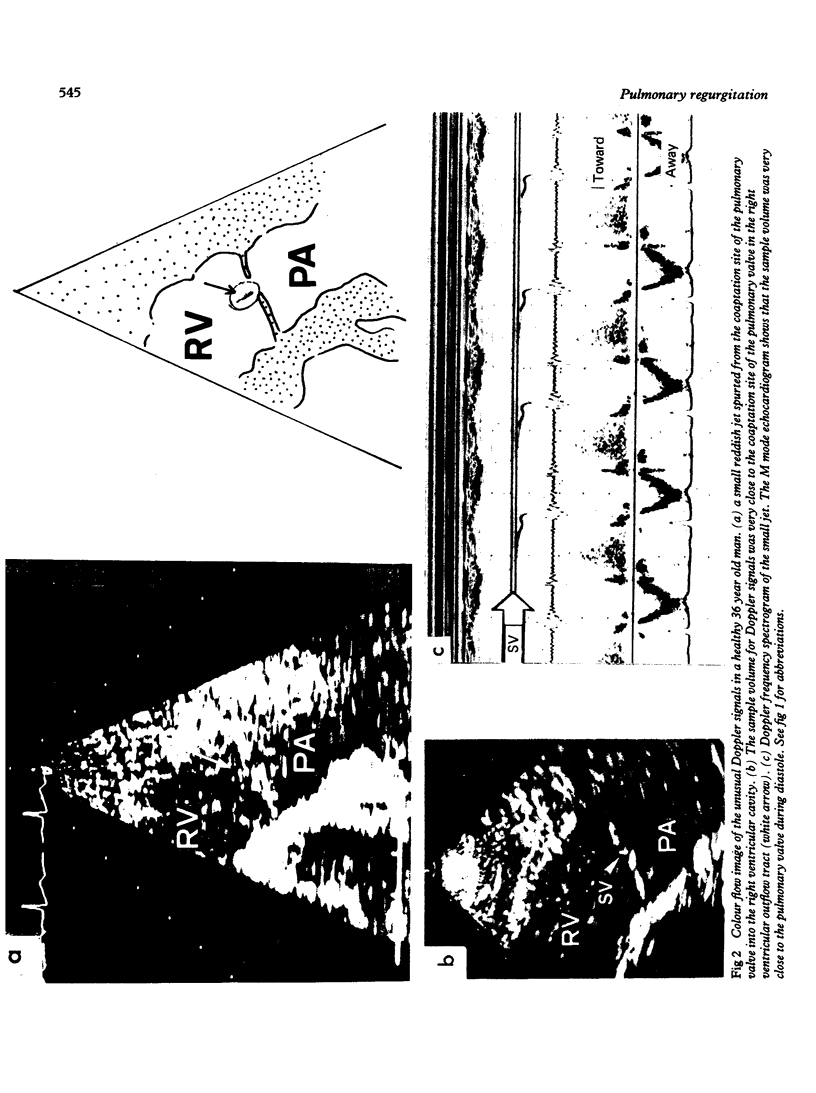
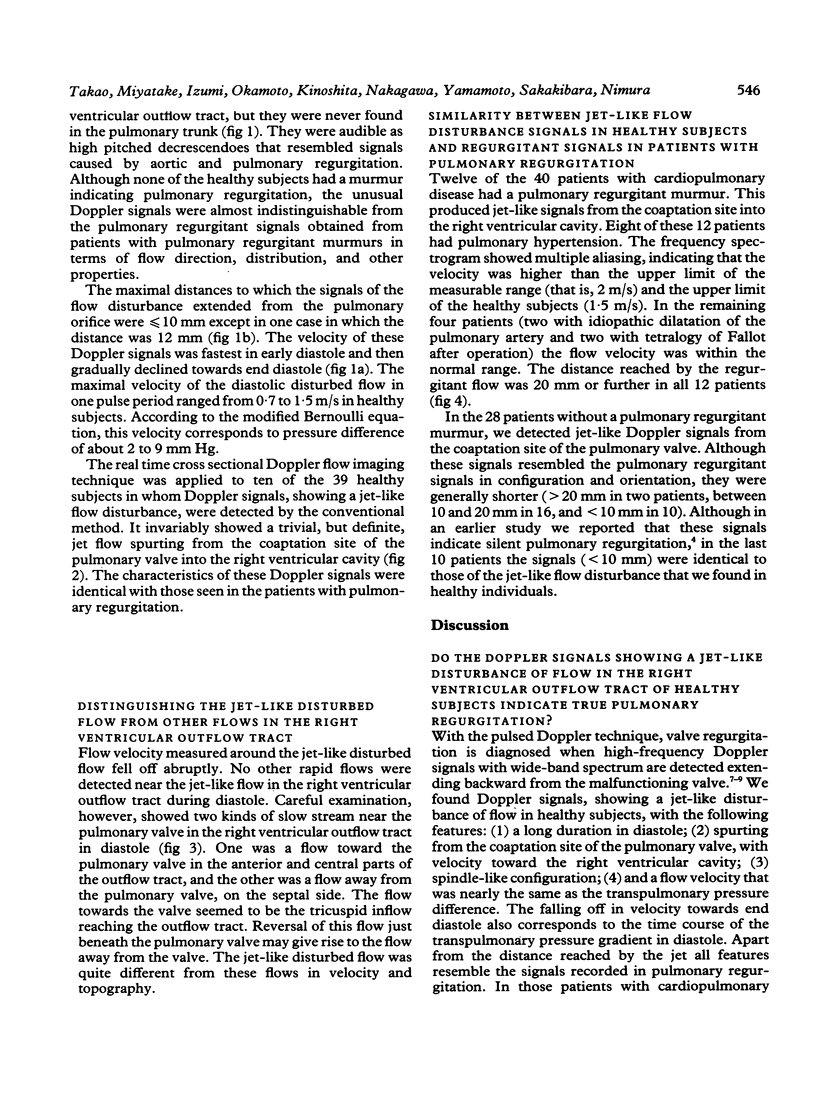
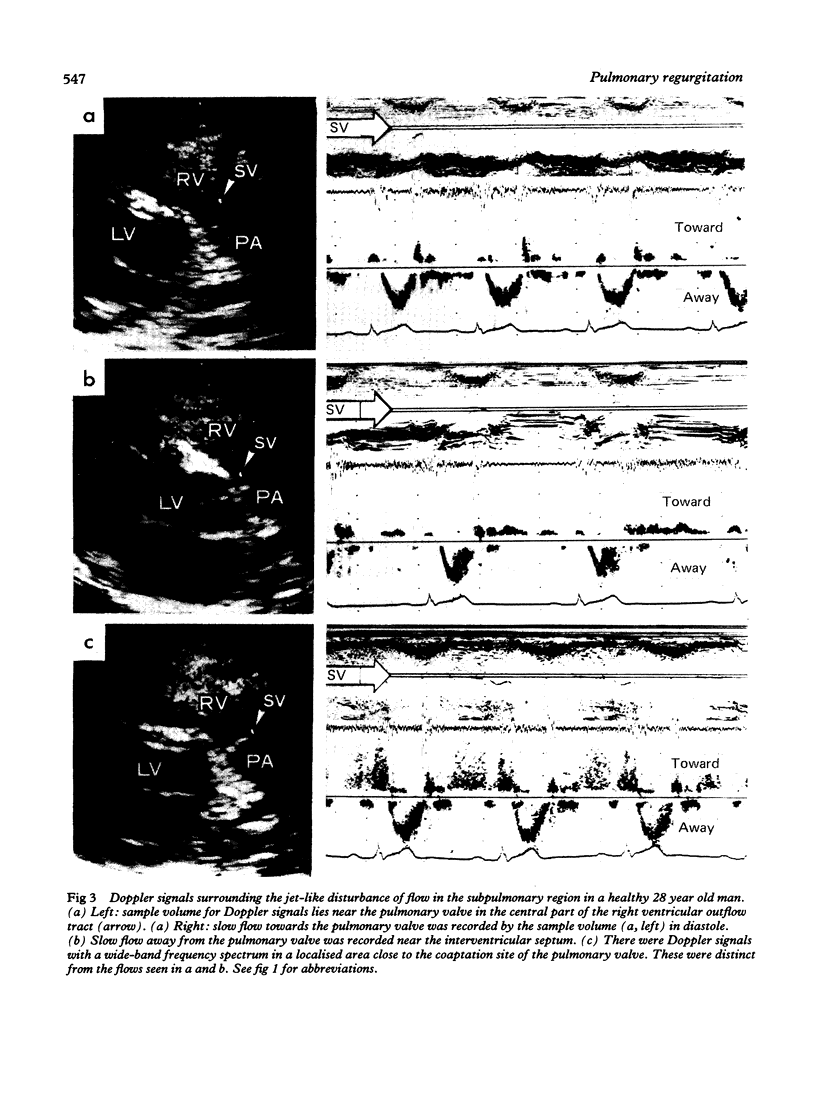
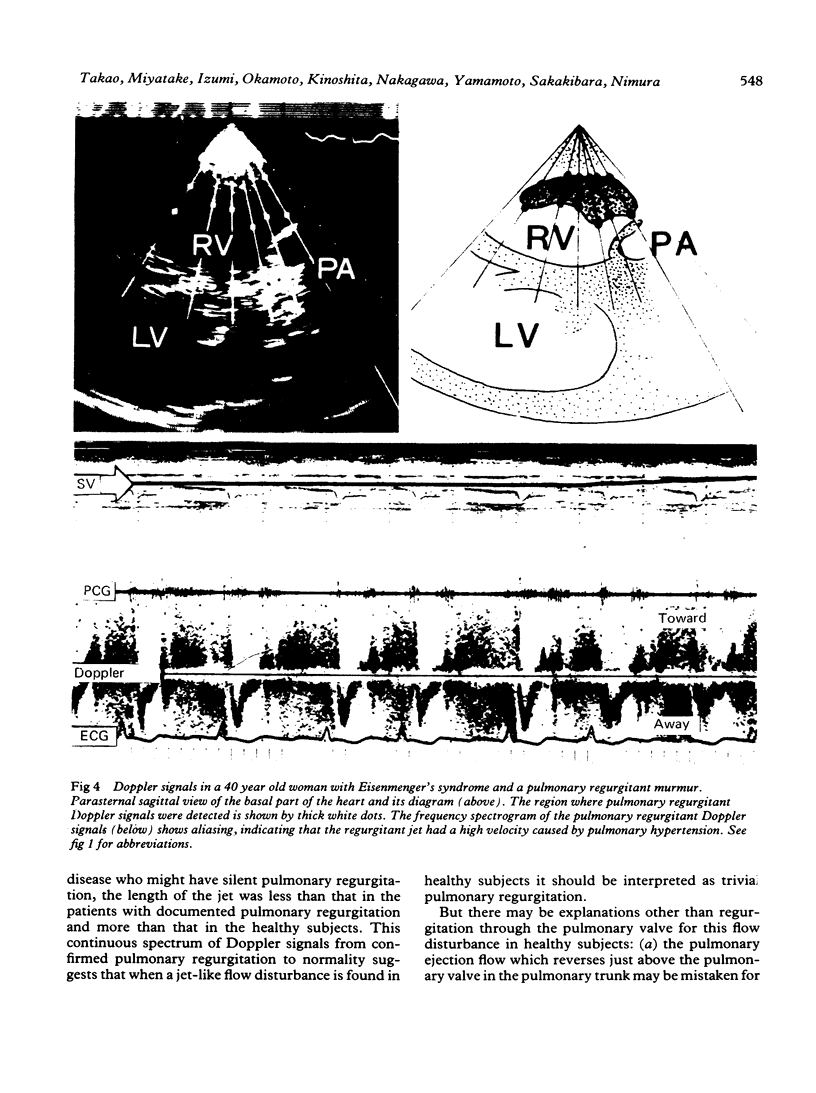
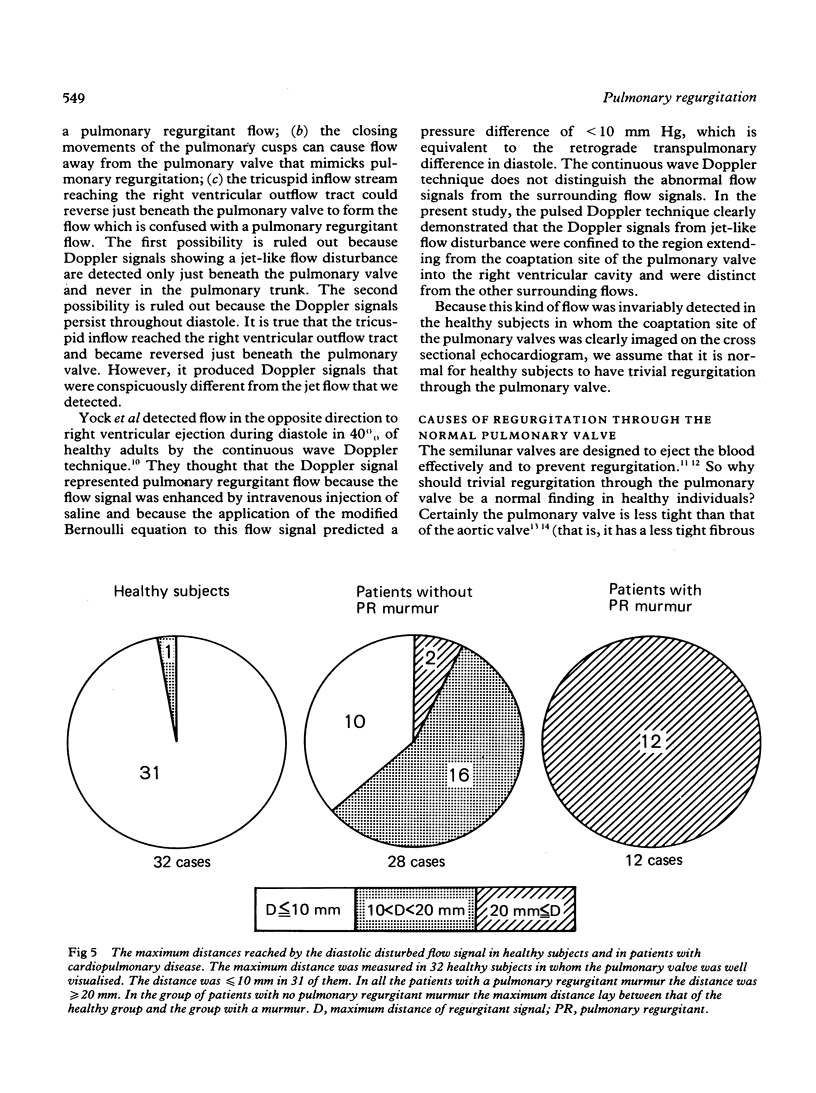
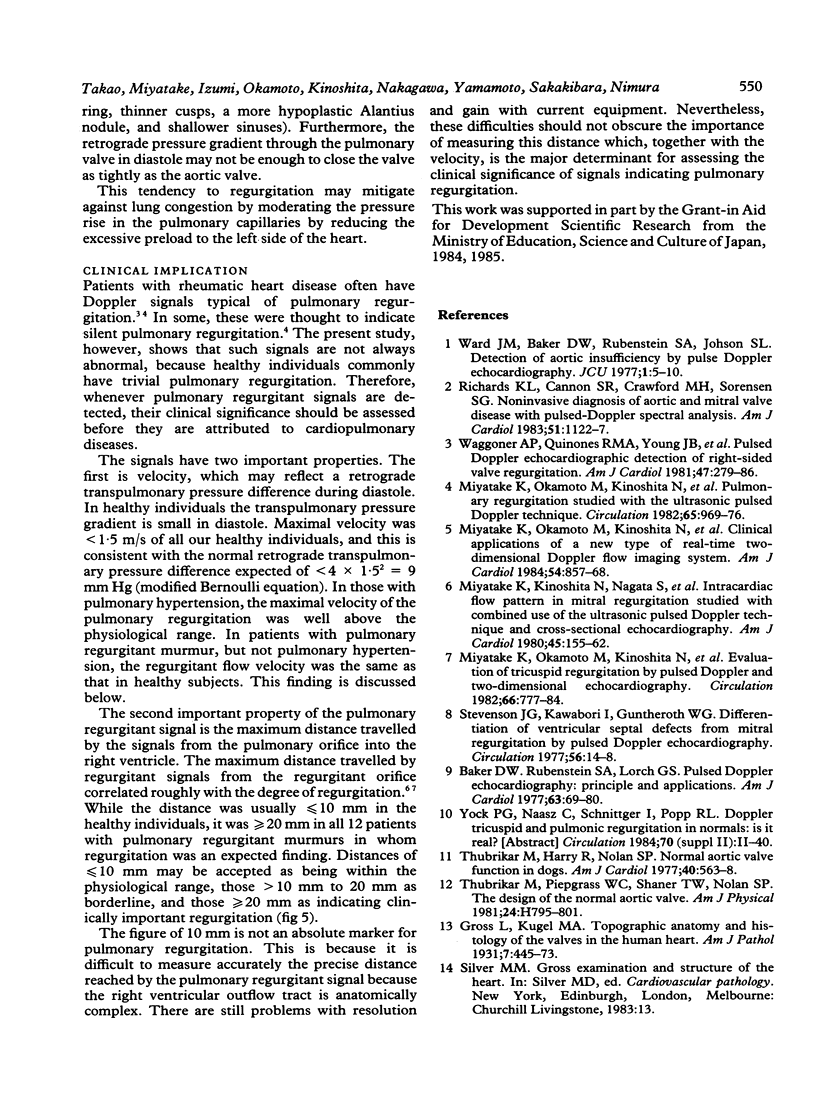
Images in this article
Selected References
These references are in PubMed. This may not be the complete list of references from this article.
- Baker D. W., Rubenstein S. A., Lorch G. S. Pulsed Doppler echocardiography: principles and applications. Am J Med. 1977 Jul;63(1):69–80. doi: 10.1016/0002-9343(77)90119-x. [DOI] [PubMed] [Google Scholar]
- Gross L., Kugel M. A. Topographic Anatomy and Histology of the Valves in the Human Heart. Am J Pathol. 1931 Sep;7(5):445–474.7. [PMC free article] [PubMed] [Google Scholar]
- Miyatake K., Kinoshita N., Nagata S., Beppu S., Park Y. D., Sakakibara H., Nimura Y. Intracardiac flow pattern in mitral regurgitation studied with combined use of the ultrasonic pulsed doppler technique and cross-sectional echocardiography. Am J Cardiol. 1980 Jan;45(1):155–162. doi: 10.1016/0002-9149(80)90233-7. [DOI] [PubMed] [Google Scholar]
- Miyatake K., Okamoto M., Kinoshita N., Izumi S., Owa M., Takao S., Sakakibara H., Nimura Y. Clinical applications of a new type of real-time two-dimensional Doppler flow imaging system. Am J Cardiol. 1984 Oct 1;54(7):857–868. doi: 10.1016/s0002-9149(84)80222-2. [DOI] [PubMed] [Google Scholar]
- Miyatake K., Okamoto M., Kinoshita N., Matsuhisa M., Nagata S., Beppu S., Park Y., Sakakibara H., Nimura Y. Pulmonary regurgitation studied with the ultrasonic pulsed Doppler technique. Circulation. 1982 May;65(5):969–976. doi: 10.1161/01.cir.65.5.969. [DOI] [PubMed] [Google Scholar]
- Miyatake K., Okamoto M., Kinoshita N., Ohta M., Kozuka T., Sakakibara H., Nimura Y. Evaluation of tricuspid regurgitation by pulsed Doppler and two-dimensional echocardiography. Circulation. 1982 Oct;66(4):777–784. doi: 10.1161/01.cir.66.4.777. [DOI] [PubMed] [Google Scholar]
- Richards K. L., Cannon S. R., Crawford M. H., Sorensen S. G. Noninvasive diagnosis of aortic and mitral valve disease with pulsed-Doppler spectral analysis. Am J Cardiol. 1983 Apr;51(7):1122–1127. doi: 10.1016/0002-9149(83)90356-9. [DOI] [PubMed] [Google Scholar]
- Stevenson J. G., Kawabori I., Guntheroth W. G. Differentiation of ventricular septal defects from mitral regurgitation by pulsed Doppler echocardiography. Circulation. 1977 Jul;56(1):14–18. doi: 10.1161/01.cir.56.1.14. [DOI] [PubMed] [Google Scholar]
- Thubrikar M., Harry R., Nolan S. P. Normal aortic valve function in dogs. Am J Cardiol. 1977 Oct;40(4):563–568. doi: 10.1016/0002-9149(77)90072-8. [DOI] [PubMed] [Google Scholar]
- Thubrikar M., Piepgrass W. C., Shaner T. W., Nolan S. P. The design of the normal aortic valve. Am J Physiol. 1981 Dec;241(6):H795–H801. doi: 10.1152/ajpheart.1981.241.6.H795. [DOI] [PubMed] [Google Scholar]
- Waggoner A. D., Quinones M. A., Young J. B., Brandon T. A., Shah A. A., Verani M. S., Miller R. R. Pulsed Doppler echocardiographic detection of right-sided valve regurgitation. Experimental results and clinical significance. Am J Cardiol. 1981 Feb;47(2):279–286. doi: 10.1016/0002-9149(81)90398-2. [DOI] [PubMed] [Google Scholar]
- Ward J. M., Baker D. W., Rubenstein S. A., Johnson S. L. Detection of aortic insufficiency by pulse Doppler echocardiography. J Clin Ultrasound. 1977 Feb;5(1):5–10. doi: 10.1002/jcu.1870050103. [DOI] [PubMed] [Google Scholar]



